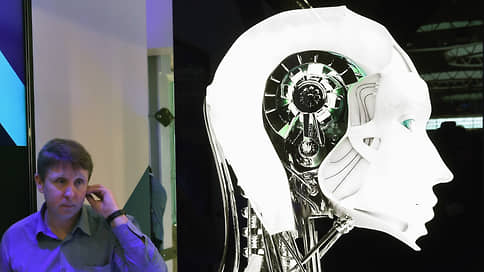Check first on robots – Newspaper Kommersant No. 63 (7508) dated 04/12/2023
[ad_1]

Large language models (LLMs), popular since 2022 under the name of “artificial intelligence” (AI), can be effectively used as a model of an ordinary consumer in the economy. Economist John Horton of MIT has shown that LLM GPT-3 is, in an applied sense, no different from homo economicus in at least three classic economic experiments from 1990–2010. The prospects opened up by this unflattering work for a reasonable person are wide: the use of LLM as a computer model of a person, including for economic forecasting, is very inexpensive.
NBER-published preprint of John Horton of MIT University Sloan School of Business in the USA, “Large Economic Models as Simulation of Economic Agents: What Can We Learn from the Silicon Man?” – an infrequent case when the idea is fully described by the title. The public chat implementation of communications with large LLMs, such as GPT-3, became one of the ultra-popular “viral” entertainments of social networks in 2023: for the first time, AI in this implementation created the feeling of communicating with a model of the mind, similar in speech behavior to a person. Horton’s job was to test whether GPT-3 would behave anywhere near the way normal homo sapiens behave in classic economic experiments. That is, is it possible already now to replace homo economicus, the mathematical model of the behavior of an abstract person in the economy, with a computer one, which Horton generically calls homo silicus, “silicon man”. The shortest answer is yes. A slightly more complete answer: LLM allows not only modeling “just a person”, but also in the long term “customizing” it to the types of worldviews, professionalizations, personal preferences through AI training by changing the flow of incoming data.
Horton studied the behavior of such a model of “economic man” in three classic economic experiments: Charness and Rabin’s 2002 study of “social choice”, Kahneman’s 1986 study of the limitations imposed by “honesty” on the possibility of a person’s advantageous choice, and Samuelson and Zeckhower’s 1988 experiment. year, which explores systematic deviations towards the status quo in economic decision making. All three experiments have been repeatedly confirmed on “human” samples. To this set Horton, a labor market specialist, added his own, he dealt with strategies for replacing labor in the presence of restrictions on the minimum wage in the market. In all four simulations of living people, LLM obtained an “encouraging”, according to the author, result: Homo silicus in the form of GPT-3, the imperfections and dissimilarity of which to homo sapiens since the beginning of 2023, in correspondence with LLM, millions of social network users have found out and ridiculed, behaves in these experiments about the same as these people.
Therefore, it is cheaper and easier to experiment in economics on them – there are no ethical or economic restrictions, no sample-scale barriers, no problems with data processing. Judging by the abstract, John Horton discussed in the course of his work the (actually rather unfortunate) similarities between “silicon” and “economic” man with a number of well-known economists, including Daniel Rock, Daron Acemoglu, Jonathan Meyer, Eliott Lipnowsky, and Horton’s conclusions may become technology very soon. Then it will become clear to what extent it allows drawing conclusions about more complex aspects of human economic behavior. Note that Horton’s experiments are not necessarily something that can be called a “revolution in economics”, but even data on the differences between homo silicus and homo economicus can provide very important information about what this science can and cannot do.
[ad_2]
Source link






